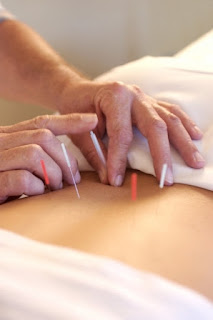Eastern Medicine and Western Medicine - The Different, In this modern age, we all must
already know that so many kinds of chemical drugs. This is due to the number of
new breakthrough in treating various disease itself. But one thing we must not
forget that chemical drugs always have side effects for the patients
themselves.
Because of side effects, so many of the people who
eventually turned back to traditional treatment methods. In addition to more
secure because almost no side effects, traditional medicine was also relatively
affordable.
Perhaps it is better if we learn the methods of treatment
adopted by China, where the treatment by medical science, also accompanied by
traditional methods were modernized with high technology. Treatment of China is
often referred to as Eastern medicine.
Eastern Medicine and Western Medicine - The Different
 |
| Western Medicine and Eastern Medicine |
Western Medicine
Already we know, western medicine has found a variety of
drugs ranging from aspirin painkillers, to medicines at exorbitant prices.
Manufactured with advanced technology, derived either from organic material or
inorganic. Organic compounds are compounds that will decompose in our bodies
later, while inorganic compounds are compounds that do not decompose, such as
sodium, nitrogen and metal compounds, such as zinc, magnesium, calcium and
others. Stacks of inorganic compounds will be out along with urine. When we drink
water about 2 litres per day, maybe it can be healthy kidneys, but if less than
that, then we'll kidneys work harder, and certainly will reduce the life of our
kidneys. Western medicine has a tendency to resolve the disease within a short
time without taking into account other organs that may be disturbed by
substances carried by the drug or long-term effects. As long as the disease is
now recovered, it did not matter. Without taking into account the result of the
next, or may be the element of intent, because one day the patient will come
again with another illness, and of course, he also had the cure. This fact
makes many people think that this treatment seems to show the existence of an
element of the business, which is very strong.
Eastern Medicine
The concept of Eastern medicine is very different from the
ways of western medicine. Our society has become first nature to always
drinking herbal concoctions derived from the leaves to maintain health or to
cure ailments, such as colds, coughs and so on. Eastern medicine is not
directly cure the illness. However, removing toxins, or toxins in the body or
blood of us with a certain potion. After that, the recovery of organs, which
then would automatically improve the performance of antibodies in our bodies to
fight the disease. In this system, the body will be directed to make its own
antibodies which are permanent, not temporary and into dependency.
Here is the real difference between Western Medicine and Eastern Medicine.
WESTERN MEDICINE
/ SYNTHETIC CHEMICAL:
1. Western medicine more coming from the West Country, so
that the orientation was to the west.
2. Material treatment using chemical synthesis, which is of
course the use of chemicals.
3. Biodegradable synthetic chemical treatment is between 50
and 80%.
4. It is geared to eliminate the symptoms.
5. Characteristically symptomatic only to reduce suffering.
6. Characteristically palliative means healing speculative,
if appropriate disease will be cured, if not would be a dangerous poison.
7. Preferably for diseases that are acute (need help
immediately) such as acute asthma, acute diarrhoea, fractures, acute infections
and others.
8. The reaction was quick, yet destructive means to weaken
the other organs, especially if used continuously for a long time.
9. The side effects that can be caused by irritation of the
stomach and liver, kidney damage, resulting in blood fats.
10. Treatment of synthetic chemicals in the long run may
weaken the immune system of our body.
11. Western medicine uses the paradigm of "illness is
the enemy", "disease is the enemy".
12. Overcoming partially (mostly).
13. Symptomatic treatment, treatment based on symptoms.
14. Tests to the animals.
15. Newly discovered several years.
16. Most of the content in synthetic chemical treatments
very rarely listed label "HALAL". Therefore most synthetic chemical
drugs containing "dubious substances" or "hazardous
substances".
EASTERN MEDICINE / HERBAL:
1. Herbal treatment more excavated from the east, such as
the Middle East, Asia, especially from China, Japan, Korea, India, and
Indonesia.
2. Herbal treatments use natural or organic ingredients.
3. Power absorption of herbal medicine is an average of 90%.
4. Directed at the root cause of disease and improvement of
functions and organs are damaged.
5. Characteristically reconstructive or organ repair and
rebuilding organs, tissues or cells are damaged.
6. Characteristically curative means to truly heal because
of his treatment at the root cause of the disease.
7. Preferably to prevent illness, recovery complications of
chronic diseases, as well as the types of diseases that require prolonged
treatment.
8. The reaction is slow but it is constructive or repair and
rebuild damaged organs.
9. Side effects are almost non-existent.
10. Herbal treatment is actually able to boost the immune
system with better results.
11. Treatment of the east have a paradigm of "illness
is not the enemy, but due to an imbalance of energy".
12. Addressing an integral (holistic).
13. Causative Treatment, treatment based on the cause of the
disease.
14. Tests to humans.
15. Tested for thousands of years ago.
16. Treatment of herbal rated lawful, since pure from plants
or natural.












